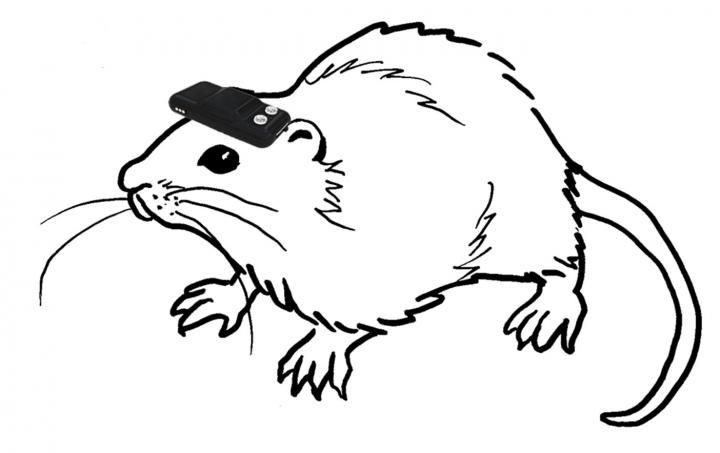Blind Rats 'See' Through Geomagnetic Brain Implants

In an experiment that could significantly advance efforts toward providing a sensory input to blind people, scientists have shown that it is possible to enable blind rats to “see” by attaching tiny digital compasses to their brains. The findings of the study, published in the journal Current Biology, also open the doors to providing something akin to a sixth sense to sighted humans -- expanding their senses to detect even ultraviolet radiation and ultrasound waves.
In their experiments, the Japanese scientists attached a digital compass, similar to one found in smartphones, to the visual cortex of adult rats whose eyelids had been sewn shut. The compass was connected to a microstimulator that sent different electrical signals to the rat’s visual cortex when they were pointing north or south, allowing them, in essence, to “see” through geomagnetic signals.
Before this compass was attached, the rodents were unable to navigate through mazes. However, within just days, the rats were able to use the geomagnetic information to solve the mazes. Remarkably, their performance levels were found to be similar to those of normally sighted rats.
“We were surprised that rats can comprehend a new sense that had never been experienced or ‘explained by anybody’ and can learn to use it in behavioral tasks within only two to three days,” study co-author Yuji Ikegaya from the University of Tokyo said in a statement.
“The most remarkable point of this paper is to show the potential, or the latent ability, of the brain,” Ikegaya added. “We demonstrated that the mammalian brain is flexible even in adulthood -- enough to adaptively incorporate a novel, never-experienced, non-inherent modality into the pre-existing information sources.”
While the findings of the study point toward an obvious application -- attaching geomagnetic sensor to walking canes used by blind people -- there is another, much more tantalizing implication. The researchers believe that the technology can be used to “expand” our current senses, so that one day, humans could learn to not only read and interpret geomagnetic signals, but also make sense of information gleaned from ultraviolet radiation, ultrasound waves and other signals that our brains can’t yet detect.
“Perhaps you do not yet make full use of your brain,” Ikegaya said in the statement, adding that the real is much more “colorful” than what we currently experience.
© Copyright IBTimes 2025. All rights reserved.






















